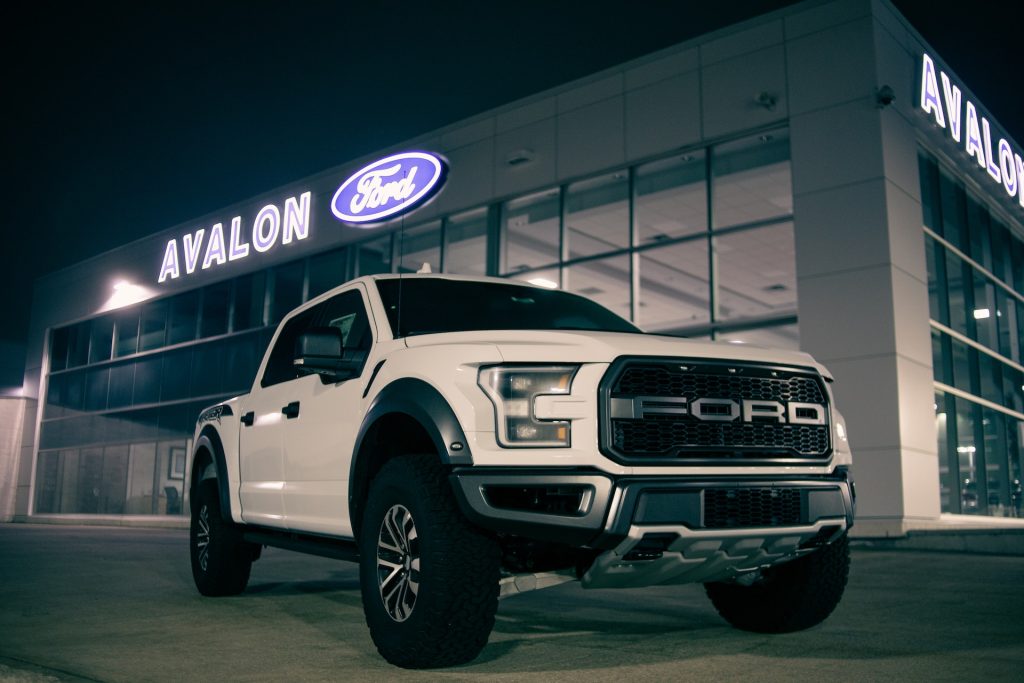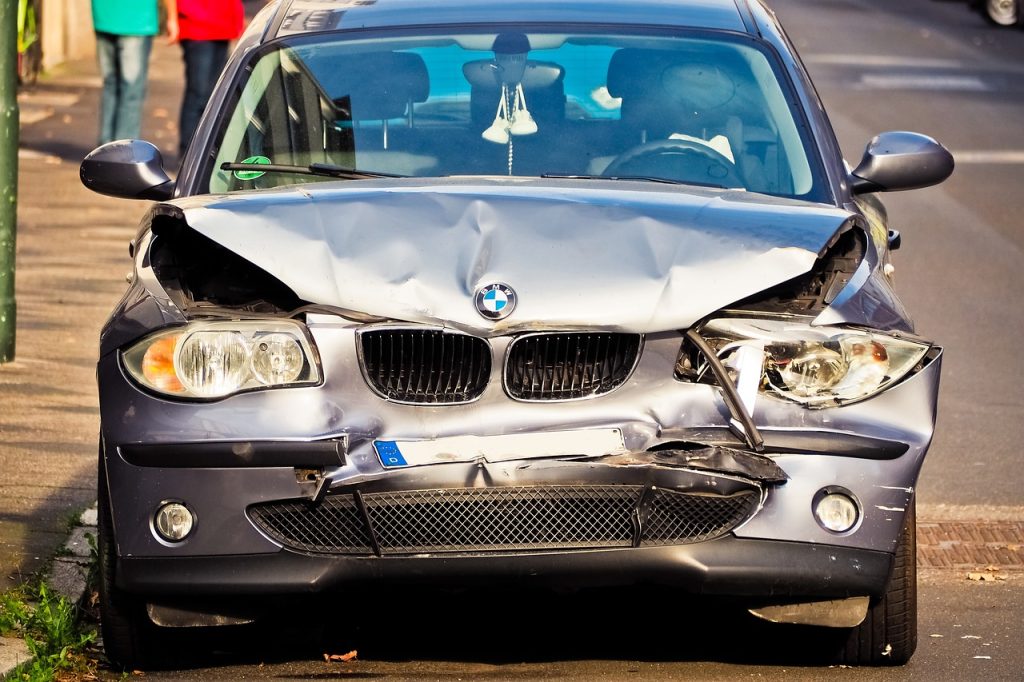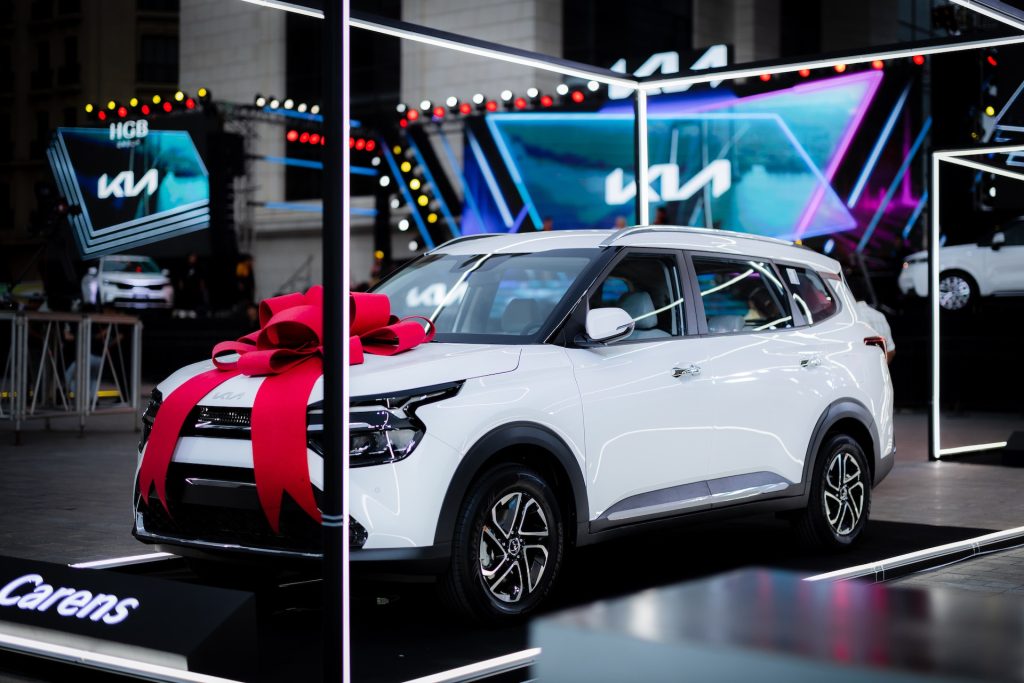Discover what you should know about gap insurance in safeguarding your automotive and financial interests. Unravel the mechanics of gap insurance, explore its benefits, and learn how it can be a safety net. Make informed decisions on GAP insurance.
As licensed drivers, we take great pride in owning and driving our cars, be they brand new or well loved. While we strive to be responsible and cautious on the roads, unfortunate events like accidents and theft can happen unexpectedly. In such moments, the last thing anyone wants is to be burdened with financial setbacks, especially if they still owe a considerable amount on their car loan or lease. This is where GAP insurance, also known as Guaranteed Asset Protection, comes to the rescue.
In this article, CheapInsurance.com will shed light on what it is, how it works, and why it’s an essential consideration for every car owner. Whether you’re a new driver or have years of experience behind the wheel, understanding GAP insurance will empower you to make informed decisions about protecting your vehicle.
From unraveling the mechanics of this additional coverage to your automobile insurance, to exploring its benefits and limitations, we’ll leave no stone unturned. We’ll address common questions like “Do I need GAP insurance?” and “How much does GAP insurance cost?” Additionally, we’ll discuss how car insurance can serve as a safety for this certain situation.

What is Gap Insurance?
GAP insurance, short for “Guaranteed Asset Protection,” is an additional type of insurance that covers the “GAP” between the outstanding loan amount on your car and its actual cash value. When you buy a new car, its value depreciates the moment you drive it off the lot. If your car gets stolen or is declared a total loss in an accident, your primary car insurance will only cover the current market value of the vehicle. This might not be enough to pay off the remaining loan balance, leaving you financially responsible for the difference. Here’s where GAP insurance steps in.
How Does This Type Of Car Insurance Work?
Let’s understand how it works with a scenario. Imagine you purchased a new car for $30,000, and a year later, you still owe $25,000 on your loan. Unfortunately, your car is involved in a severe accident, and the insurer declares it a total loss. At this point, your primary insurance will assess the car’s current value, which might only be $20,000 due to depreciation. Without GAP insurance, you would have to cover the remaining $5,000 on your loan out of your pocket.
However, it will step in and cover the $5,000 shortfall, ensuring that your loan is fully paid off, and you’re not left with a financial burden. This safety net is particularly beneficial for those who have purchased a new car with a low down payment or those who have leased a vehicle.
What Does This Additional coverage On My Inexpensive Auto Insurance Cover?
If you’re considering purchasing GAP insurance, understanding what it covers is crucial. It provides valuable protection in specific situations where your primary car insurance may fall short. Let’s explore what gap insurance covers and how it can act as a financial safety net during unforeseen events.
Vehicle Depreciation:
The primary purpose of gap insurance is to cover the depreciation of your vehicle. As soon as you drive your new car off the lot, it starts to lose value. In case of an accident or theft, your standard car insurance will only reimburse you for the current market value of the vehicle, not the original price you paid for it. This can lead to a significant shortfall between the amount you owe on your car loan and the insurance payout.
GAP insurance steps in to bridge this gap, covering the difference between the actual cash value of your car and the amount you owe on your loan or lease. By doing so, it ensures you are not left with an outstanding loan balance to pay off even after your primary insurance settlement.
Total Loss Accidents:
In the unfortunate event of a total loss accident where your car is severely damaged and deemed beyond repair, it becomes extremely valuable. Your primary insurance will assess the car’s current value and provide you with a payout based on that amount. If your loan balance is higher than the payout, you would be responsible for covering the difference out of pocket.
GAP insurance steps in to cover this difference, ensuring that you’re not burdened with paying off a loan for a car you no longer possess or can use. This financial protection can be a lifesaver in times of distress.
Theft:
Car theft is a distressing experience, and the last thing you want to worry about in such a situation is the financial aspect. If your car is stolen and not recovered, your standard insurance will reimburse you based on the car’s value at the time of the theft. As we know, this value can be significantly lower than what you owe on your loan.
This type of insurance comes to your aid by covering the gap between the insurance payout and the remaining loan balance. With gap insurance, you can focus on replacing your stolen vehicle without the added stress of outstanding loan debt.
Unpaid Fees and Deductibles:
GAP insurance may also cover additional expenses related to your car insurance claim, such as deductibles and unpaid fees. In some cases, your primary insurance may not cover certain fees or require a deductible to be paid before processing the claim. This addition to your cheap auto insurance can step in to cover these costs, further reducing your financial burden during an already challenging time.
Negative Equity:
Negative equity occurs when you owe more on your car loan than the car’s actual value. This situation often arises in the early stages of a car loan when the vehicle’s value depreciates faster than you’re paying off the loan. GAP insurance can provide a safety net in case of negative equity, ensuring that you’re not left in a difficult financial position.
Summary:
GAP insurance is a valuable addition to your car insurance coverage, providing essential protection in the face of total loss accidents, theft, and vehicle depreciation. It acts as a financial safety net, bridging the gap between your car’s actual cash value and the remaining loan or lease balance. With GAP insurance in place, you can drive with confidence, knowing that you won’t be burdened with outstanding loan debt in case of unforeseen events.
However, it’s essential to evaluate your specific circumstances and consult with your insurance provider to determine whether it is the right choice for you. Factors such as the value of your car, loan terms, and down payment should be considered to make an informed decision. By understanding what GAP insurance covers and how it works, you can make a well-informed choice to protect your financial interests and enjoy peace of mind on the road.

What is Not Covered?
While it provides valuable coverage in specific situations, it’s essential to understand that it doesn’t cover everything. GAP insurance has its limitations, and being aware of what it doesn’t cover will help you make informed decisions about your car insurance needs. Let’s explore the aspects that are not typically does not cover:
Deductibles for Primary Insurance:
GAP insurance does not cover the deductibles that you might have to pay as part of your primary car insurance policy. When you file a claim with your primary insurance after an accident or theft, you will likely have to pay a deductible before the insurance company pays out the rest. It will not reimburse you for this deductible amount.
Extended Warranties or Other Add-Ons:
GAP insurance covers the difference between your car’s actual cash value and the remaining loan or lease balance. It does not cover the cost of any extended warranties or additional add-ons you might have purchased when buying your car. These additional products or services are separate and will not be included in the coverage.
Carryover Balances from Previous Loans:
If you rolled over an outstanding loan balance from a previous vehicle purchase into your current car loan, gap insurance might not cover that carryover amount. It typically only covers the difference between your current car’s value and the current loan or lease balance.
Late Payment Fees or Past-Due Amounts:
GAP insurance is not designed to cover any late payment fees or past-due amounts that you may have accumulated on your car loan. It solely focuses on the GAP between the car’s value and the loan balance in the event of a total loss or theft.
Vehicle Upgrades or Modifications:
If you made any modifications or upgrades to your vehicle after purchase, gap insurance will not cover the cost of these enhancements. It is crucial to inform your gap insurance provider of any modifications, as it may impact your coverage.
Unrelated Insurance Premiums:
GAP insurance only applies to the specific gap between the car’s value and the loan balance. It does not cover other unrelated insurance premiums, such as health insurance, homeowner’s insurance, or other forms of coverage.
Carryover Interest:
If you have an outstanding balance on a previous car loan that includes accrued interest, gap insurance will not cover this carryover interest. It only addresses the difference between the car’s value and the outstanding loan balance at the time of loss.
Unpaid Fees from Primary Insurance:
GAP insurance may cover some additional expenses related to your car insurance claim, but it typically does not cover unpaid fees or charges from your primary insurance company. These expenses are separate from the gap coverage.
Summary:
While GAP insurance is an essential coverage to protect against vehicle depreciation and loan the loan payoff imbalance, it’s essential to be aware of what it does not cover. Understanding the limitations of insurance will help you avoid any surprises or misunderstandings when making a claim. Remember that this insurance is not a substitute for comprehensive car insurance, and it’s essential to maintain both coverages for comprehensive protection.
When considering this type of insurance, take the time to review your policy thoroughly and consult with your insurance provider to gain a clear understanding of what is covered and what is not. By being well-informed, you can make the right decisions to safeguard your financial interests and enjoy peace of mind while on the road.
Do I Need Affordable Car Insurance?
One of the most common questions among car owners is, “Do I need GAP insurance?” The answer depends on several factors, such as the value of your car, your down payment, and the terms of your car loan or lease.
Car Value: If you bought a new car that depreciates rapidly or have a car with a high depreciation rate, such as a luxury vehicle, GAP insurance is worth considering.
Loan or Lease Terms: If you have a long-term loan or lease, the risk of owing more than the car’s worth is higher, attaining it is a wise choice.
Low Down Payment: A small down payment means you’ll owe more on your loan than the car’s value initially, making GAP insurance advantageous.
Financing with High-Interest Rates: Vehicles financed with high-interest rates take longer to build equity, increasing the chance of being “upside-down” on the loan. this type of insurance can protect you in such situations.
Where Can I Get GAP Coverage With Affordable Auto Insurance?
If you’re considering gap insurance, you might be wondering where to get it. Here are some options:
Car Dealerships: When you purchase a new or used car, dealerships often offer gap insurance as an add-on option. While convenient, it’s essential to compare prices and terms with other providers.
Insurance Companies: Many insurance companies provide gap insurance as an additional coverage option. Reach out to your current insurer to inquire about their offerings.
Online Insurance Providers: Numerous online insurance companies offer gap insurance policies. Shopping online allows you to compare rates and find a policy that suits your needs and budget.

Which Companies Offer the Best Cheap Insurance?
If you’ve decided that GAP insurance is the right choice to protect yourself from potential financial gaps in your car insurance coverage, the next step is to find a reputable company that offers the best GAP coverage. Many insurance providers offer GAP insurance as an add-on option, but it’s essential to compare their offerings to ensure you get the best value for your money. Let’s take a closer look at some top insurance companies known for providing reliable vehicle insurance and comprehensive GAP coverage:
Allstate:
Allstate is a well-established insurance company that offers GAP insurance as part of its additional coverage options. They have a strong reputation for providing excellent customer service and transparent policies. Allstate’s GAP coverage can help bridge the gap between your car’s value and your outstanding loan or lease balance, giving you peace of mind in case of an accident or theft.
Progressive:
Progressive is another popular choice for GAP insurance coverage. They offer comprehensive policies that protect you from the potential financial burden of a totaled or stolen vehicle. Progressive’s GAP insurance is designed to cover the difference between the car’s actual cash value and the amount you owe on your loan or lease, ensuring you don’t end up with out-of-pocket expenses.
Nationwide:
Nationwide is known for its wide range of insurance products, and their GAP insurance is no exception. With Nationwide’s GAP insurance, you can rest assured that you won’t be left with outstanding loan debt if your car is declared a total loss or stolen. They offer competitive rates and flexible coverage options to suit your needs.
Geico:
Geico, famous for its catchy advertisements, also offers GAP insurance coverage to protect its policyholders. Geico’s GAP insurance aims to fill the gap between your car’s value and your loan or lease balance, ensuring you’re financially protected in challenging situations.
USAA:
If you’re a member of the military or have a military affiliation, USAA is an excellent option for GAP insurance coverage. They offer comprehensive protection and competitive rates for their members, helping you bridge the gap between your insurance payout and your outstanding loan balance.
State Farm:
State Farm, one of the largest insurance providers in the country, also offers GAP insurance to its customers. With State Farm’s GAP insurance, you can have added peace of mind knowing that you won’t be burdened with loan debt after an unfortunate event.
AAA:
AAA, a trusted name in roadside assistance and insurance services, provides GAP insurance coverage to its members. Their GAP insurance policies can be a valuable addition to your auto insurance coverage, protecting you from potential financial setbacks.
Summary:
When considering GAP insurance, it’s essential to choose a reliable and reputable insurance company that offers comprehensive coverage. The companies mentioned above are known for providing quality GAP insurance policies to protect you from potential financial gaps in your car insurance coverage. However, it’s crucial to compare their offerings, rates, and terms to find the best fit for your specific needs and budget. Remember that GAP insurance is an important safety net that can offer invaluable protection in case of accidents, theft, or total loss events, ensuring you have peace of mind while driving on the road.
Is It Inexpensive Insurance?
The cost of GAP insurance can vary based on several factors, including the insurance provider, the value of your car, the length of your loan or lease, and your location. While this insurance is an essential coverage, it’s important to understand the potential costs and factor them into your budget. Let’s explore the factors that influence the price of insurance and what you can expect in terms of costs:
Vehicle Value:
The value of your car is a significant factor that affects the cost of GAP insurance. The more expensive your vehicle, the higher the insurance premium will likely be. Luxury cars and high end vehicles tend to have higher premiums due to their higher replacement cost and potential depreciation rates.
Loan or Lease Terms:
The length of your car loan or lease can impact the cost of car insurance. Longer loan terms mean a more extended period for the vehicle’s value to depreciate, which may increase the risk of a potential space between the car’s value and your loan balance. As a result, the GAP insurance premium may be higher for longer loan or lease terms.
Deductible Options:
Some insurance providers may offer different deductible options. A deductible is the amount you would need to pay out of pocket before the GAP insurance coverage pays on any claim. Opting for a lower deductible can increase the premium, while a higher deductible may reduce the cost.
Insurance Company:
The insurance company you choose can also impact the car insurance insurance quote. Different insurers have varying pricing models and underwriting criteria, which can lead to different premiums for the same coverage. It’s essential to compare auto insurance quotes from multiple insurance companies to find the most competitive car insurance quote.
Location:
The state or region where you live can influence the cost of GAP insurance. Insurance regulations, car market values, and other regional factors can affect the pricing of automobile insurance products.
One-Time Payment or Added to Premium:
You may have the option to pay for GAP insurance as a one-time payment or add it to your monthly insurance premium. Choosing to pay it as a one-time payment may be more cost-effective than adding it to your monthly premium, where there could be added administrative fees.
Car Dealership vs. Insurance Provider:
If you purchase GAP insurance from a car dealership, the cost may be bundled with the car’s purchase price, and it may seem more expensive. On the other hand, buying this insurance directly from an insurance provider may offer more competitive rates and greater flexibility in coverage.
General Range of Premium Costs:
It’s essential to note that the following figures are approximate and can vary based on the factors mentioned above, as well as the specific insurance provider. However, these figures provide a general idea of the range of premium costs for GAP insurance:
Low End: On the lower end of the spectrum, GAP insurance premiums can start around $400 for a one-time payment or a few dollars extra added to your monthly premium.
Mid Range: For most car owners, GAP insurance premiums fall within the mid-range, ranging from $400 to $700 for a one-time payment or a slightly higher monthly premium.
High End: On the higher end, GAP insurance premiums can exceed $700, especially for high-value or luxury vehicles with longer loan terms.
Summary:
The cost of GAP insurance can vary based on factors like the value of your car, loan or lease terms, deductible options, insurance company, location, and payment method. While the price of insurance should be a consideration, it’s crucial not to overlook the importance of having this valuable coverage. Automotive insurance can save you from potential financial burdens in case of a total loss or theft of your vehicle. To get the best value for your money, compare cheap car insurance quotes from different insurance providers and consider the level of coverage that suits your specific needs. By investing in this insurance, you can drive with confidence, knowing that you’re financially protected in unforeseen circumstances.

Will Insurance Pay Off My Loan?
Gap insurance typically covers the difference between your outstanding loan balance and the actual cash value of your car at the time of loss. However, it’s important to note, this insurance might not cover other expenses like deductibles, past-due payments, or late fees.
As for the cost of gap insurance, it varies depending on the insurer and the value of your car. On average, gap insurance can cost between $400 to $700 for a one-time payment, or it could be added to your monthly insurance premium for a few dollars extra.
Can I Add Gap Insurance to My Existing Cheap Car Insurane?
If you already have car insurance and are considering gap insurance, you might wonder whether you can add it to your existing policy. In most cases, the answer is yes. Many insurance companies allow you to add gap insurance as an endorsement to your current policy. However, the availability and terms may differ, so it’s best to contact your insurer directly to discuss your options.
Should I Drop Gap Insurance When My Car Loan Has a Low Balance?
As you make regular car loan payments, the outstanding balance decreases, and the gap between the loan amount and your car’s value narrows. You might wonder if it’s a good idea to drop gap insurance at this point. While it’s tempting to save on insurance costs, it’s essential to consider the potential risks.
Accidents and theft can happen unexpectedly, and even with a low loan balance, you could still end up owing more than the car’s value. Evaluating your car’s current value, depreciation rate, and the likelihood of accidents can help you make an informed decision. If you’re unsure, it’s wise to consult your insurance provider for personalized advice.
Wrapping Up
Understanding the importance of gap insurance can provide much-needed peace of mind. Gap insurance acts as a safety net, protecting you from financial strain in case of an accident or theft. Evaluate your car’s value, loan terms, and depreciation rate to determine whether you need gap insurance. It’s readily available through dealerships, insurance companies, and online providers. Remember that having gap insurance doesn’t mean you should drop it once your loan balance is low; unforeseen circumstances can still arise, making it a valuable asset throughout your car ownership journey.
By staying informed and making the right choices, you can safeguard yourself and your vehicle, ensuring smooth and worry-free driving experiences for years to come.


